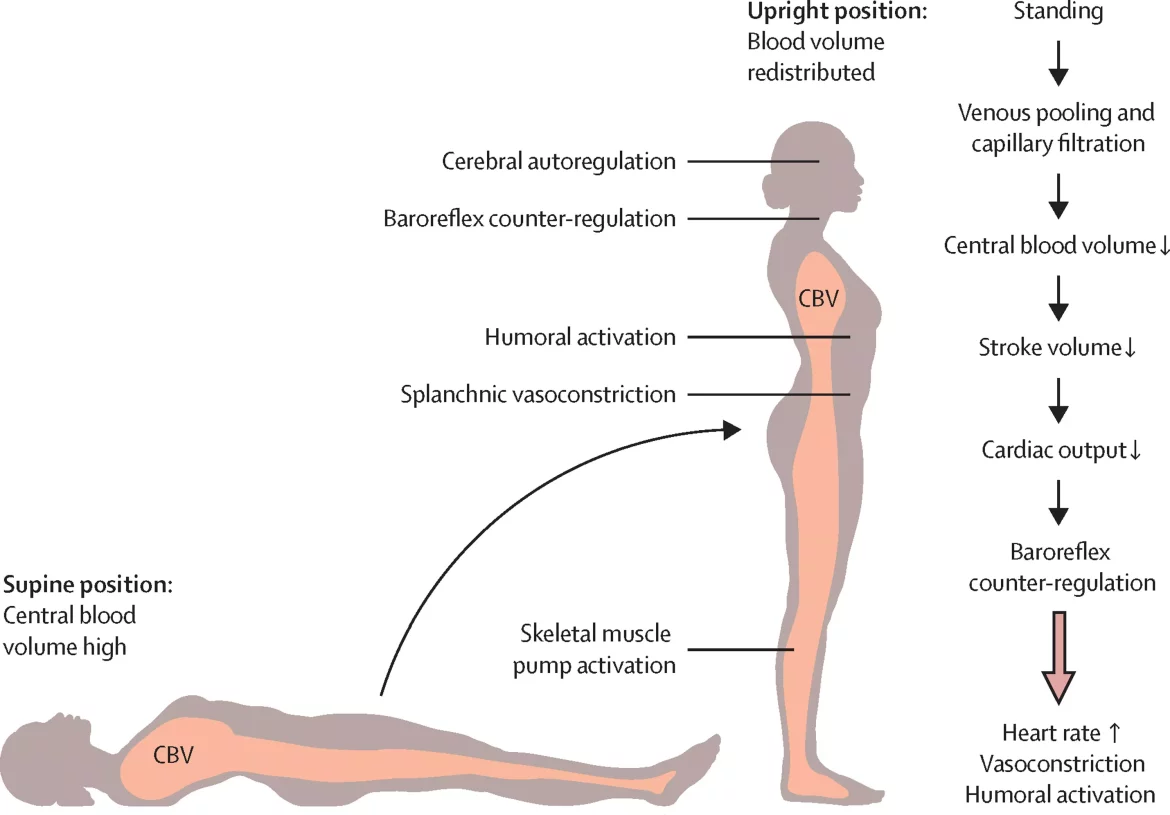Orthostatic hypertension is a condition characterized by an excessive increase in blood pressure upon standing up. Unlike orthostatic hypotension, where blood pressure drops when standing, orthostatic hypertension can be equally troublesome and requires careful management. This article delves into what orthostatic hypertension is, its symptoms, potential causes, and most importantly, strategies and treatments for managing this condition effectively.
What Is Orthostatic Hypertension?
Orthostatic hypertension is defined as a significant increase in systolic blood pressure (typically an increase of 20 mmHg or more) when moving from a lying or sitting position to a standing position. This condition can be associated with various underlying health issues and can pose risks to cardiovascular health if not managed properly.
Symptoms of Orthostatic Hypertension
The symptoms of orthostatic hypertension can vary, but they commonly include:
- Dizziness or lightheadedness upon standing
- Headaches
- Blurred vision
- Nausea
- Palpitations
- Feeling faint or near-fainting
- Chest pain (in severe cases)
These symptoms can significantly impact daily activities and overall quality of life, making it essential to identify and manage the condition effectively.
Causes And Risk Factors
Several factors can contribute to the development of orthostatic hypertension. Understanding these can help in tailoring appropriate management strategies. Common causes and risk factors include:
Autonomic Dysfunction: Disorders affecting the autonomic nervous system, such as multiple system atrophy or Parkinson’s disease, can lead to orthostatic hypertension.
Aging: Older adults are more prone to blood pressure regulation issues, including orthostatic hypertension.
Medications: Certain medications, particularly those affecting blood pressure regulation, can contribute to orthostatic hypertension.
Dehydration: Insufficient fluid intake can exacerbate blood pressure fluctuations.
Underlying Health Conditions: Conditions such as diabetes, kidney disease, and cardiovascular diseases can influence blood pressure control.
What to Do for Orthostatic Hypertension
Managing orthostatic hypertension involves a combination of lifestyle modifications, medical treatments, and regular monitoring. Here are the key strategies to consider:
Lifestyle Modifications
Hydration:
Increase Fluid Intake: Ensure adequate hydration by drinking plenty of water throughout the day. Dehydration can exacerbate blood pressure fluctuations.
Electrolyte Balance: Incorporate drinks that balance electrolytes, such as oral rehydration solutions, especially in hot weather or after exercise.
Dietary Adjustments:
Reduce Salt Intake: Excessive salt can increase blood pressure. Aim for a balanced diet with moderate salt consumption.
Frequent, Small Meals: Eating smaller, more frequent meals can help prevent large fluctuations in blood pressure.
Physical Activity:
Regular Exercise: Engage in moderate physical activity to improve cardiovascular health. Activities like walking, swimming, or cycling can be beneficial.
Avoid Sudden Movements: Rise slowly from a seated or lying position to prevent sudden blood pressure spikes.
Postural Adjustments:
Elevate the Head of the Bed: Sleeping with the head of the bed slightly elevated can help maintain a more stable blood pressure overnight.
Compression Stockings: Wearing compression stockings can help improve blood circulation and prevent blood from pooling in the legs.
Medical Treatments
Medications:
Beta Blockers:These medications can help manage heart rate and blood pressure.
Alpha Blockers: Useful in managing blood pressure by relaxing certain blood vessels.
Mineralocorticoid Receptor Antagonists: Such as fludrocortisone, which can help increase blood volume and pressure.
Midodrine: This medication can constrict blood vessels and help increase blood pressure when needed.
Monitoring and Adjusting Medications:
Regular Monitoring: Regular blood pressure monitoring at home can help track fluctuations and the effectiveness of treatments.
Medication Review: Work with your healthcare provider to review and adjust medications that might contribute to orthostatic hypertension.
Addressing Underlying Conditions:
Diabetes Management: Effective control of blood sugar levels can help prevent complications that affect blood pressure.
Cardiovascular Health: Managing heart disease or other cardiovascular conditions is crucial for overall blood pressure control.
Behavioral and Supportive Strategies
Gradual Changes:
Slow Position Changes: Take your time when transitioning from lying down to sitting, and from sitting to standing.
Leg Movements: Perform simple leg exercises before standing to help circulate blood.
Professional Guidance:
Physical Therapy: A physical therapist can provide exercises and techniques to help manage symptoms and improve overall stability.
Support Groups: Joining a support group for people with blood pressure issues can provide emotional support and practical advice.
Educational Resources:
Patient Education: Learn about orthostatic hypertension, its triggers, and management strategies through reputable sources.
Healthcare Provider Communication: Maintain open communication with your healthcare provider to address any concerns or new symptoms promptly.
Living with Orthostatic Hypertension
Living with orthostatic hypertension requires ongoing management and vigilance. By incorporating lifestyle changes, adhering to medical treatments, and regularly monitoring blood pressure, individuals can reduce symptoms and improve their quality of life. It is essential to work closely with healthcare providers to tailor a comprehensive management plan that addresses individual needs and circumstances.
Regular Check-Ups And Follow-Ups
Routine check-ups and follow-ups with your healthcare provider are crucial for managing orthostatic hypertension. These appointments allow for:
Monitoring Progress: Tracking the effectiveness of treatment strategies and making necessary adjustments.
Identifying Complications: Early detection and management of potential complications.
Receiving Personalized Advice: Tailored recommendations based on the latest research and individual health status.
Importance of Support Systems
Having a strong support system can make a significant difference in managing orthostatic hypertension. This support can come from:
Family and Friends: They can provide assistance with daily activities and emotional support.
Healthcare Team: Regular consultations with doctors, nurses, and other healthcare professionals.
Community Resources: Support groups and community programs designed for individuals with similar health issues.
Conclusion
Orthostatic hypertension, though challenging, can be effectively managed with a combination of lifestyle modifications, medical treatments, and ongoing monitoring. Understanding the condition, making informed choices, and working closely with healthcare providers are key steps in maintaining a stable blood pressure and improving overall well-being.
By taking a proactive approach and utilizing available resources, individuals can lead healthier, more active lives despite the challenges posed by orthostatic hypertension.


